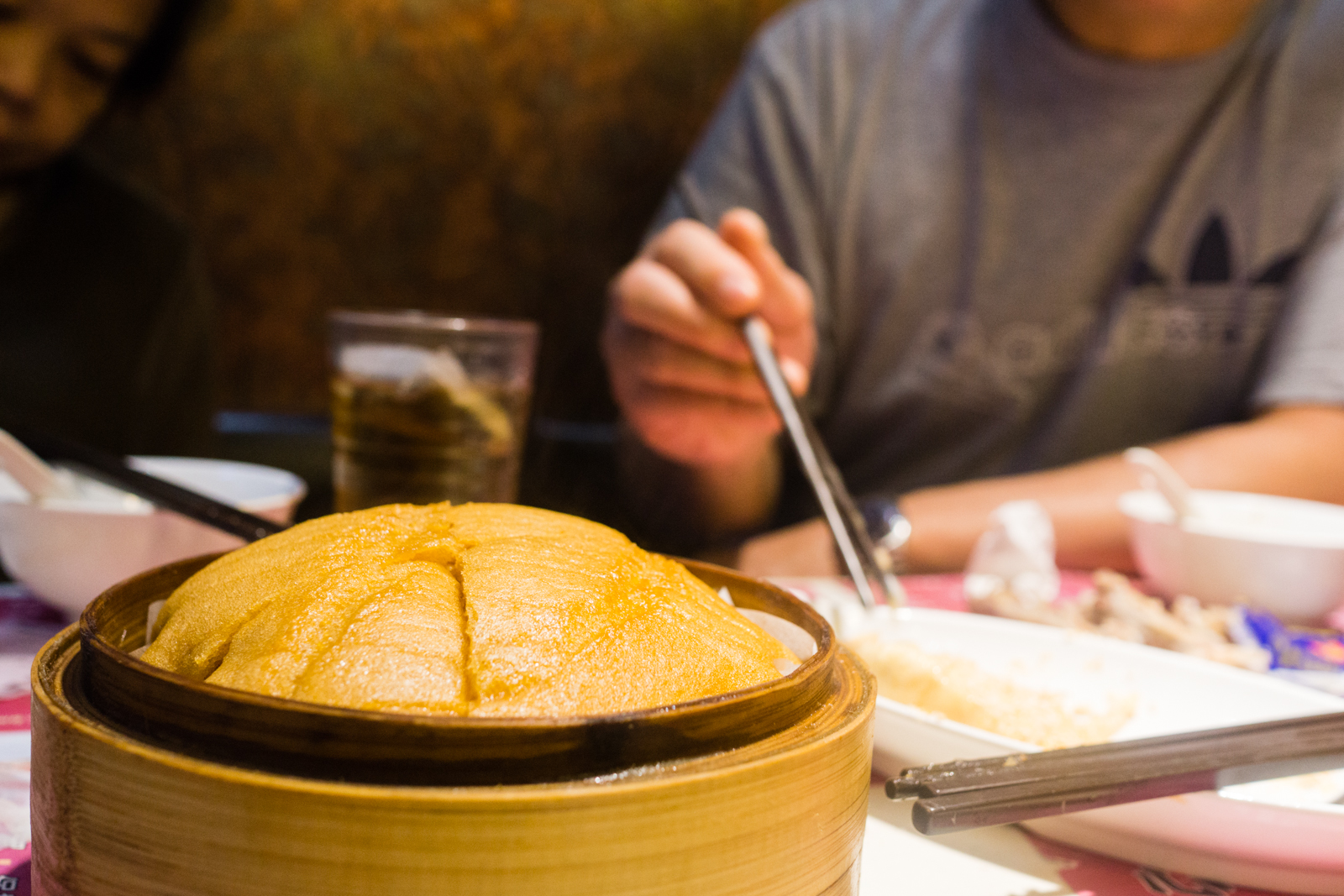
Dim sum dishes are usually associated with yum cha ( Chinese: 飲茶 Cantonese Yale: yám chàh pinyin: yǐnchá lit. Written in the Five Dynasties and Ten Kingdoms period (907–979), the book uses dim sum as a verb instead: 「治妝未畢, 我未及餐, 爾且可點心」 "Zhì zhuāng wèi bì, wǒ wèi jí cān, ěr qiě kě diǎnxīn", which translates to: "I have not finished preparing myself and ready for a proper meal, therefore you can treat yourself with some small snacks." In this context, dim sum ( 點心 'to lightly touch (your) heart'), means "to barely fill (your) stomach". Some versions date the legend to the Southern Song dynasty (960–1279)< after the term's earliest attestation in the Book of Tang ( 唐書 Táng shū. "Gratitude", or 點點心意 diǎn diǎn xīnyì, later shortened to 點心 diǎn xīn, of which dim sum is the Cantonese pronunciation, came to represent dishes made in a similar fashion. According to one legend, to show soldiers gratitude after battles, a general had civilians make buns and cakes to send to the front lines. Some references state that the term originated in the Eastern Jin dynasty (317 AD–420 AD). The original meaning of the term dim sum remains unclear and contested. There are variations designed for visual appeal on social media, such as dumplings and buns made to resemble animals, that also exist. In addition to traditional dim sum, some chefs also create and prepare new fusion-based dim sum dishes. It is now commonplace for restaurants to serve dim sum at dinner time and sell various dim sum items a la carte for takeout. Dim sum restaurants have a unique serving method where servers offer dishes to customers from steam-heated carts. Many Cantonese restaurants serve dim sum as early as five in the morning, while more traditional restaurants typically serve dim sum until mid-afternoon.

The tea is very important, just as important as the food. ĭim sum restaurants typically have a wide variety of dishes, usually totaling several dozen. Cantonese dim sum has a very broad range of flavors, textures, cooking styles and ingredients, and can be classified into regular items, seasonal offerings, weekly specials, banquet dishes, holiday dishes, house signature dishes, travel-friendly, as well as breakfast or lunch foods and late night snacks. Some estimates claim that there are at least two thousand types of dim sum, though only about forty to fifty types are commonly sold outside of China.

There are over one thousand dim sum dishes in existence today. As dim sum continued to develop, chefs introduced influences and traditions from other regions of China. Cantonese dim sum was based originally on local foods. Cantonese dim sum culture developed rapidly during the latter half of the nineteenth century in Guangzhou.

The practice of having tea with dim sum eventually evolved into the modern yum cha (brunch). Teahouse owners gradually added various snacks called "dim sum" to their offerings. The second is dim sum (點心) and translates literally to "touching heart", the term used to designate the small food items that accompanied the tea drinking. This refers to the custom of serving teahouse customers two pieces of delicately made food items, savory or sweet, to complement their tea. The first is " yat jung leung gin" (一盅兩件), which translates literally as "one cup, two pieces". In the tenth century, when the city of Guangzhou (Canton) began to experience an increase in commercial travel, many frequented teahouses for small-portion meals with tea called yum cha, or "drink tea" meals. Most modern dim sum dishes originated in ChinaĪnd are commonly associated with Cantonese cuisine, although dim sum dishes also exist in other Chinese cuisines. Dim sum ( traditional Chinese: 點心 simplified Chinese: 点心 pinyin: diǎnxīn Cantonese Yale: dím sām) is a large range of small Chinese dishes that are traditionally enjoyed in restaurants for brunch.


 0 kommentar(er)
0 kommentar(er)
